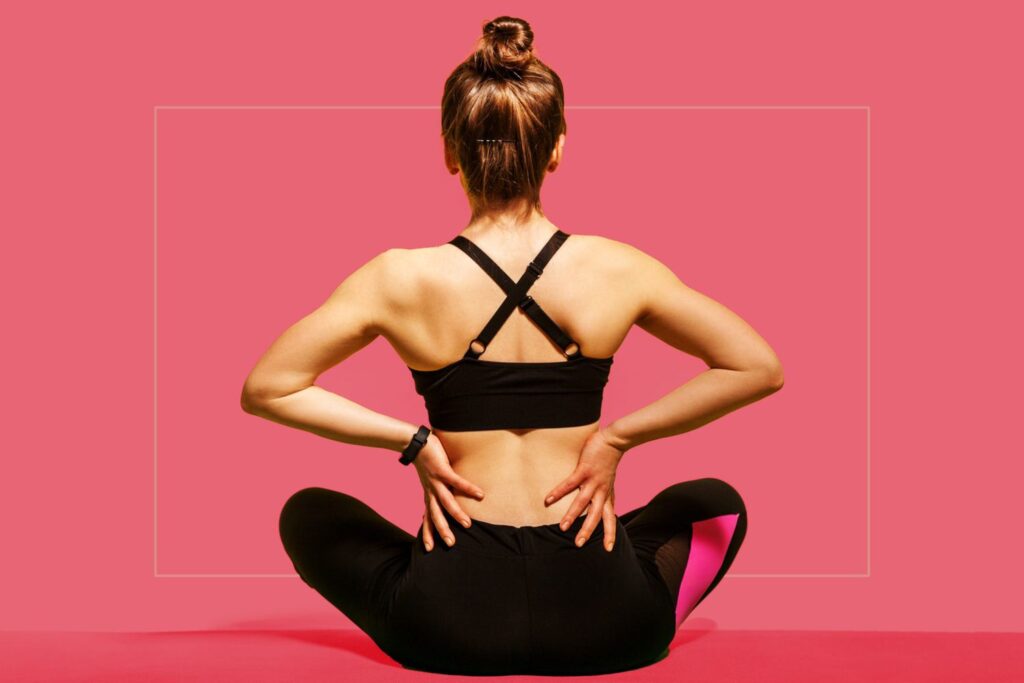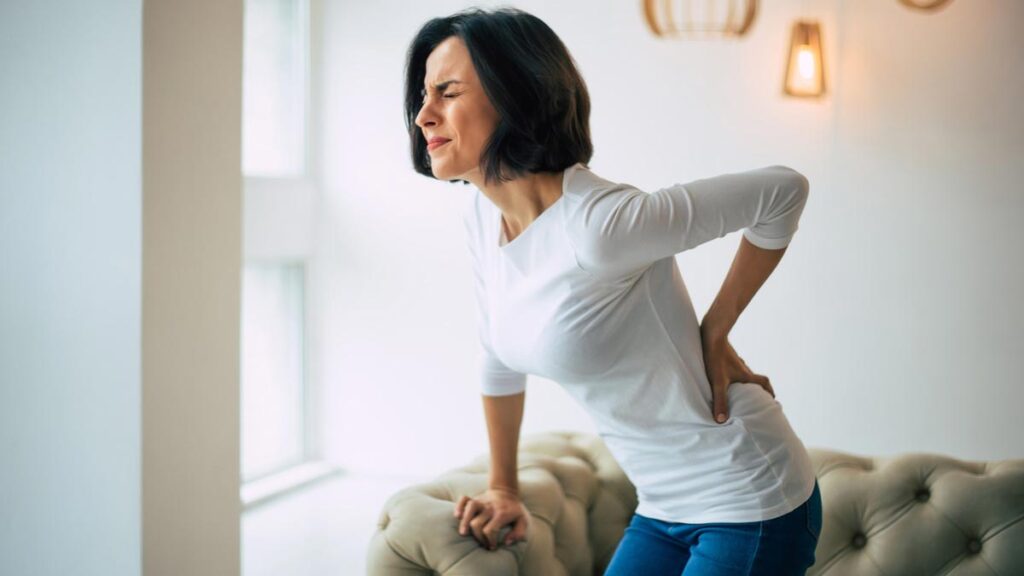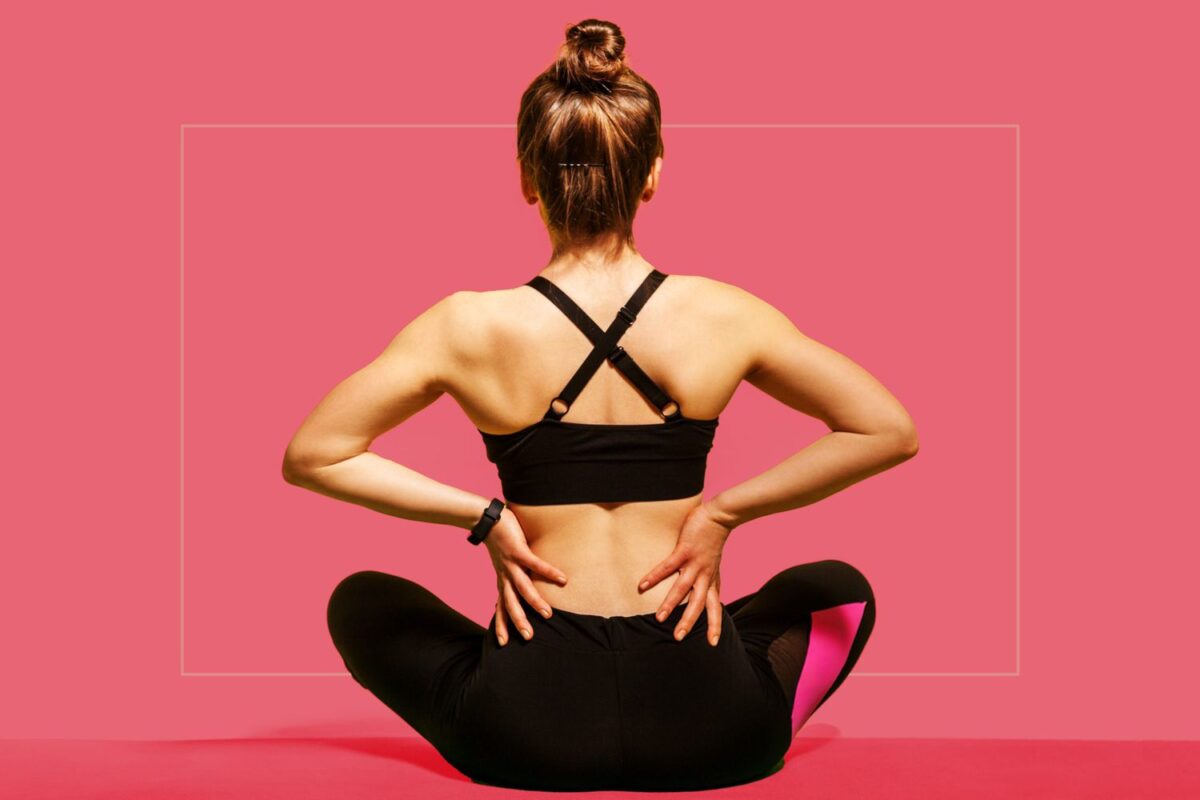Left lower back ache a persistent aching or pain that flares up occasionally and then goes away that is localized to one side of the body. The pain in the lower left side of the back might be acute, stabbing, or dull and aching. In many cases, lower left-side back pain changes when pressure is applied to the back pauses, or even intensifies, with movement.
Lower back muscles or tendons that are overworked, weakened, or strained might become stretched. Each of these injuries has inflammatory components that are linked to piercing, stabbing muscle spasms. Back injuries can also result from improper lifting techniques or poor posture. A tight or stiff back, stabbing agony in the back with movement, or muscle spasms are indications that lower left-side back pain may be the result of soft tissue damage.

Common reasons for severe, stabbing lower left side back pain
The following are the most frequent causes of stabbing, severe back pain on the lower left side :
- Damage to spinal column structures, like element joints or back discs.
- Destruction of the ligaments or muscles that support the spine.
- Internal organ diseases that affect the kidneys, reproductive organs, or gastrointestinal tract.
- Soft-Tissue Injury a man whose lower left side of his back is pierced by a strong stinging pain.
1. Strain or sprain of a muscle
The most typical reason for low back discomfort is a muscle strain or sprain. Although a sprain is a tear or stretching in a ligament, a strain is a tear or stretching in a tendon or muscle.
Sprains and strains typically result from inappropriate twisting or lifting, from lifting heavy objects, or from overstretching your back muscles. These wounds may result in edema, stiffness, and back spasms.
2. Disc herniation
When one or more of the discs between your vertebrae become compressed and protrude into the spinal canal, this condition is known as a herniated disc. These protruding discs frequently press on nerves, resulting in discomfort, weakness, and numbness. The most typical cause of sciatica is a herniated disc.
Disc herniation can result from trauma. They also increase in frequency as you age because of the discs’ natural degeneration. It is possible that you have recently experienced low back discomfort if you have a herniated disc.
3. Failure of the sacroiliac joints
Sacroiliitis is another name for sacroiliac (SI) joint dysfunction. Each side of your spine, where it meets the top of your pelvis, contains one sacroiliac joint. This joint is inflamed in sacroiliitis. Both sides may be impacted or just one.
The most typical sign is a pain in the buttocks and lower back. Pain is typically aggravated by :
- Exerting too much weight on the injured leg while sprinting or climbing stairs or taking big steps
4. Infection or kidney stones
When it comes to eliminating waste from your body, your kidneys are essential. Certain organs may develop kidney stones. These stones may develop for a variety of reasons, including a buildup of waste or insufficient fluid in your kidneys.
Tiny kidney stones may pass on their own and not exhibit any symptoms. Bigger stones can result in these symptoms and may need to be treated :
- Suffering when urinating
- The acute ache in your lower back on one side
- Pee with blood
- Vomiting
- Nausea
- Fever
Urinary tract infections frequently lead to kidney infections (UTIs). Most of the symptoms are similar to those of kidney stones. A kidney infection might harm your kidneys permanently if it is not addressed.
5. Fibroids
Fibroids are tumors that develop in the uterine wall. Typically, they are innocuous. Fibroid symptoms include :
- Heavy menstrual bleeding uncomfortable menstrual periods
- Lower abdominal bloating or a sense of fullness
- A low backache
- Your kidneys can be permanently damaged by painful urinating during intercourse.

Hot-cold treatments for sharp, stabbing lower left-side back pain in females
Pain and inflammation can be reduced by applying an ice pack or cold compress to the injured area many times during the day for about 20 minutes each time. By slowing down blood flow, cold applications target swelling, pain, and muscular spasms.
1. Resting
Resting the back by avoiding activities that make the pain worse can aid in the healing process if a back injury was caused by a little accident (such as a hard fall) or quick movement, such as improperly moving an object.
2. Medication that relieves pain
Nonsteroidal anti-inflammatory medicines (NSAIDs), such as aspirin and ibuprofen, are available over-the-counter medications that treat pain and inflammation. When NSAIDs are ineffective or cannot be taken, acetaminophen (Tylenol), another common pain treatment, can be used to treat lower left-side back discomfort. For moderate to severe chronic pain, stronger prescription medicines and muscle relaxants may also be advised.
3. Hot-Cold Application
Pain and inflammation can be reduced by applying an ice pack or cold compress to the injured area many times during the day for about 20 minutes each time. When applying an ice pack to the skin, it should be covered with a cloth to protect it from freezing temperatures. By slowing down blood flow, cold applications target swelling, pain, and muscular spasms.
4. Physical Exercise
Physical therapy may be suggested if sharp, stabbing lower left side back pain does not go away on its own or if painkillers do not work. For people whose back discomfort requires surgical treatment, post-operative physical therapy is also a typical method of pain management. The therapy plan is often designed to facilitate a quicker recovery through supervised movement, while also lowering pain and stiffness. Also, for long-term rehabilitation, physical therapists frequently create a program that can be done at home.
Contact Texas Specialty Clinic if you have recently been injured, have numbness or paralysis in your legs, have symptoms of an infection, or feel pain. Contact us at 469-225-0666 or FAX us at (888) 900-4530.

